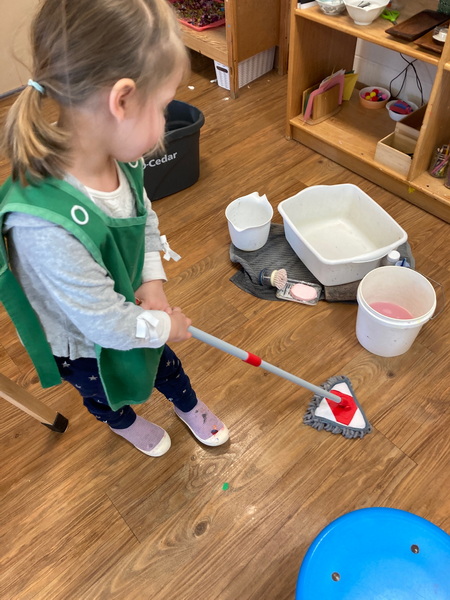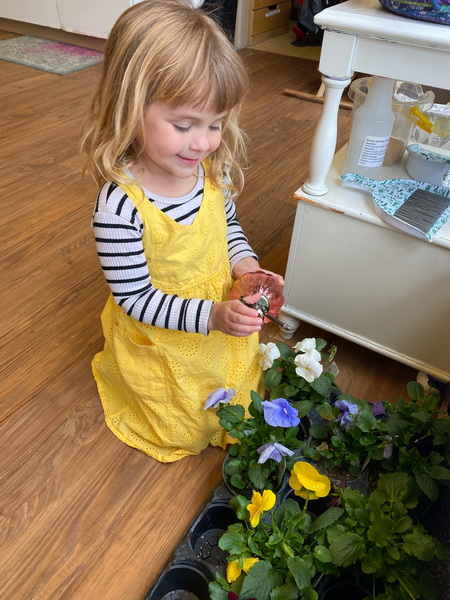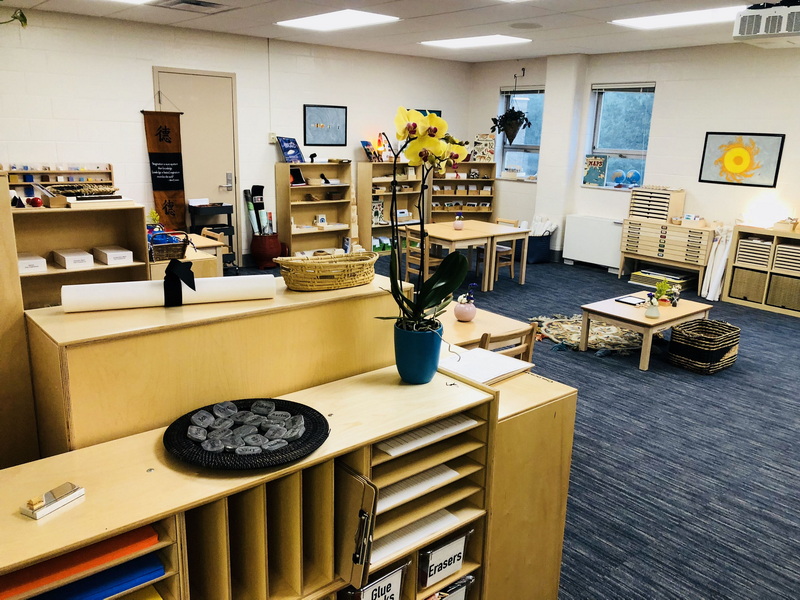Lifelong Learning and Experience: Practical Life
By Kim Yul
It is very important to define the terms practical and life to understand the whole concept of Practical Life Education. The word practical means something that we can apply to our everyday living. It is realistic, active, sensible, and pragmatic. The word life is the condition that distinguishes animals and plants from inorganic matter. Practical Life activities are applied in the classroom so the students can learn how to perform living activities in a purposeful way. The main purpose of Practical Life Education in the Montessori classroom environment is to assist the children to control their body movement, teach them how to focus on their work, and help them to be more independent. Through all of these processes, students can build their own life skills and positive habits for their long journey.

There are four big, main categories in Practical Life Education. The first category is Movement Education, which can be further specified as Control of Gross Motor and Fine Motor Movements. Maria Montessori particularly emphasized Movement Education because she believed that it assists and accelerates the child’s motor and physical development. She stated in her 1973 book The Discovery of the Child, “One of the most important practical aspects of our method has been to make the training of the muscles enter into the very life of the children so that it is intimately connected with their daily activities. Education in movement is thus fully incorporated into the education of the child’s personality” (p. 79). Based on her statement, we can understand how much she valued Movement Education. Inside and outside of the classroom, through countless repetitions, from small movements to large movements, children develop muscles in various parts of the body and learn how to use them correctly. And the more their muscles develop, the more children work harder and, as a result, gain more experiences.
The next category is the Care of Self. The main point of this section is the development of a sense of independence and self-sufficiency. By learning this area, children have a lot of time to think for themselves. They are able to think about what they need and what to do, and through those countless thought processes, they restore their confidence and realize their importance. Also, this section is related to hygiene education. They will learn how to clean themselves, and this concept will spread out to the many different branches of personal hygiene that will become important when they get older.

At the same time, they will practice Care of Environment, which is the third category. Organizing the environment around you is like homework that a person should always do in life. Others use the things that I use, and we always share the space together. This is always happening anytime, anywhere. We never monopolize anything alone. That is why we must always be able to properly manage the environment we share.
All these concepts naturally lead to the Relationship portion, which is the last category of Practical Life Education. All relationships are built on a well-prepared “self.” The word prepared here means that when I can manage and control myself, and when I can organize my environment and manage it including others, all while keeping self-reflection in mind, the right relationship is formed.
The Author
Kim Yul is originally from Gwangju and has taught in Cincinnati, Ohio, for many years. He is a Montessori elementary school teacher who believes education can change the world.
Source
Montessori, M. (1973). The discovery of the child. Ballantine Books.




